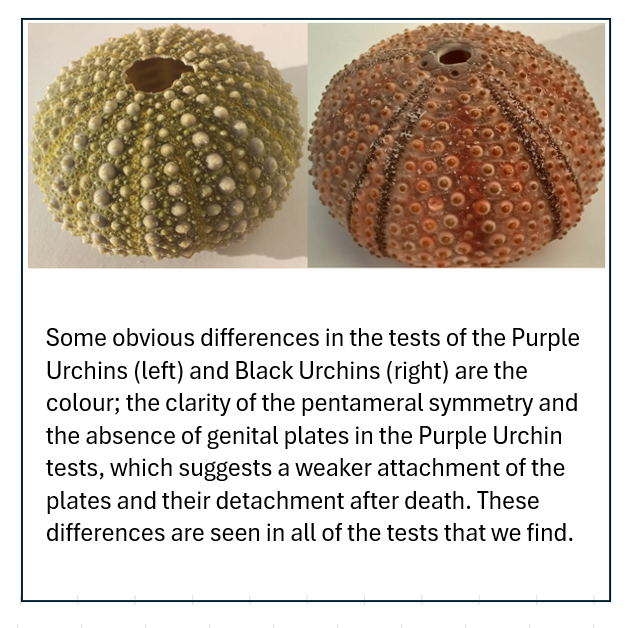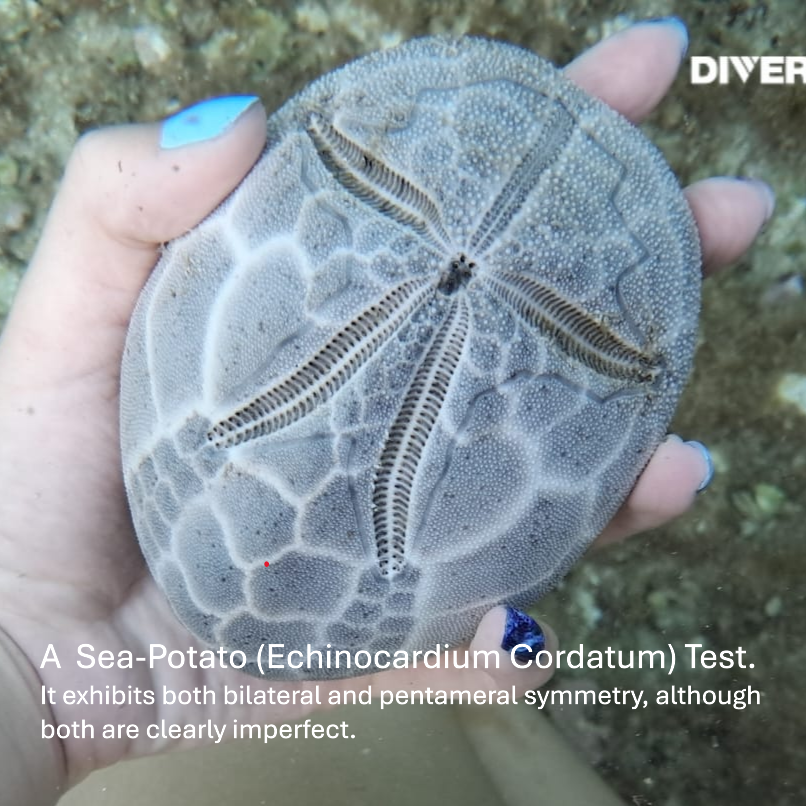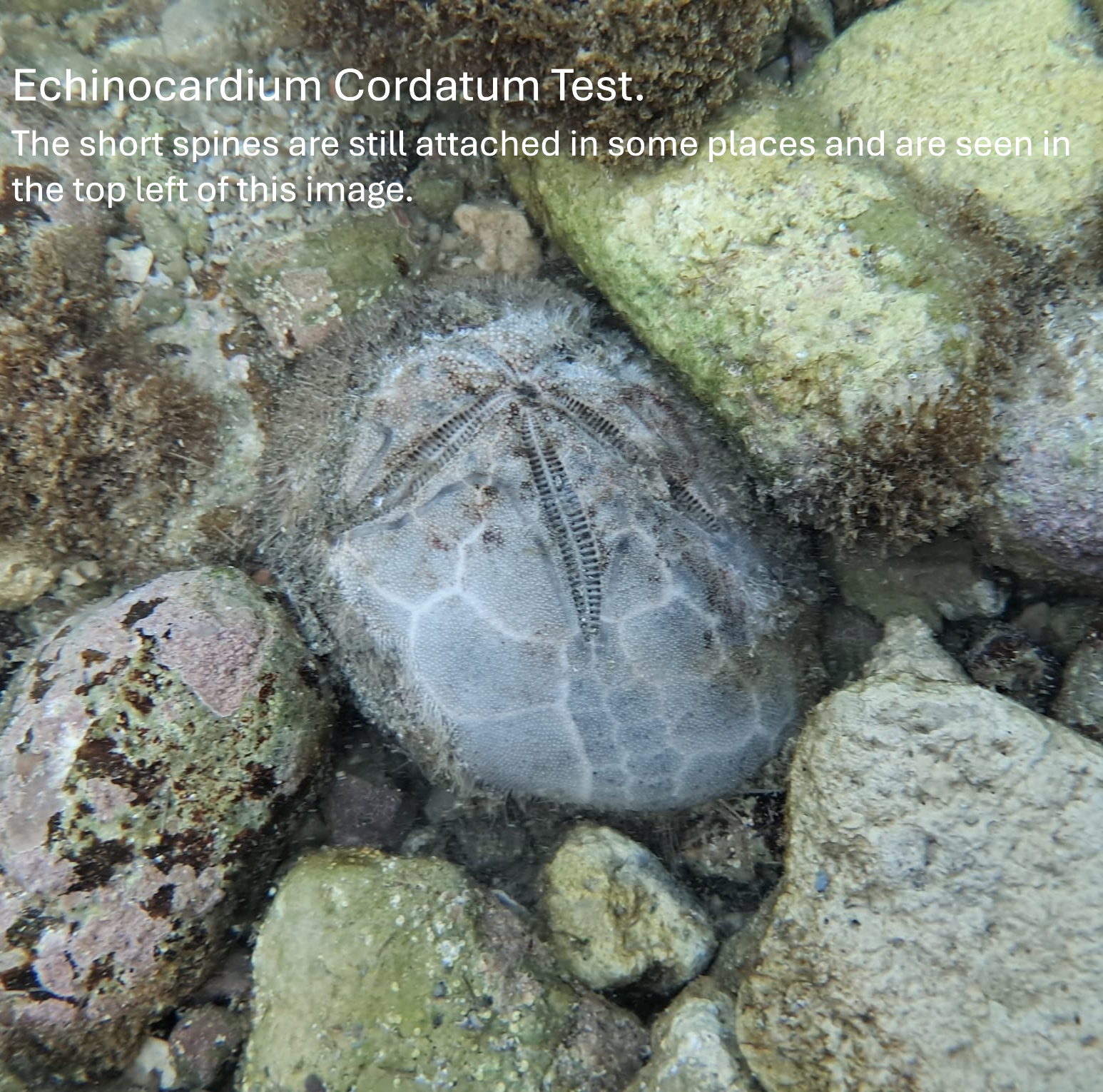Echinoderms: Sea Urchins
Sea Urchins (Echinoids)
My interest in Echinoderms was piqued at school in 1979, when I learned that a defining feature of this phylum is pentaradial (pentameral) symmetry, which seemed to me to be very odd, although I now understand that the fossil record demonstrates their evolution from a bilateral form (which is still discernible and might, in fact, suggest a reversion to this bilateral symmetry in some case (i.e. an evolution from bilateral to pentameral with bilateral symmetry being subsequently reimposed.)
Pentaradial symmetry has some advantages: the reproduction of body segments (and vital organs) introduces a degree of redundancy in case of injury or disease; in the case of Echinoids (urchins), it ensures that the test does not have a continuous line of weakness, thus offering some degree of resistance to shear fracture of the test; detection and locomotion are possible in all directions. Interestingly, the larval stages of echinoderms are bilaterally symmetrical and undergo a metamorphosis to pentaradial form.
One question with which I struggled for years was this: Why five segments, not three or four? After some thought and research, it is clear that an odd-number of segments is necessary for test strength because an even number would introduce a median line which might be a fracture path. Furthermore, the larger the number of segments, the smaller the angle between them, which reduces shear strength. It therefore seems that a low, odd number is ideal, when considering resistance to fracture propagation. I discovered that the fossil record shows a now-extinct group of animals named Trilobozoa which exhibited triradial symmetry but went extinct during the early Cambrian period.
Echinoderms have other defining features:
· Mutable Collagenous Tissue (MCT). Under their skin are layers of muscle and collagen which are used to move and hold the spines. To hold the spines firmly in position, the MCT is changed form soft to firm collagen as needed, in time scales of seconds to minutes. This allows the spines to be locked in place when the collagen is stiffened and then, when the collagen is softened, the muscle tissue under the epidermis (skin) can move the spines as needed.
· A Water Vascular System. In the closed systems found in urchins, water is filtered into this network via porous, sieve-like plate (the Madreporite) and is used as a hydraulic system for control of the podia (tube feet). This system also allows gas exchange (respiration) through the tube feet and circulation of dissolved gases and nutrients. (Some echinoderms have an open system in which the water freely enters the circulatory canals, unfiltered).
In addition to the spines and tube feet, urchins also have Pedicellariae , which grow from just under skin. These are small, pincer-like appendages with movable jaws (valves) that are used for defence and cleaning. They found dispersed among the spines and are controlled by muscle, not by the water vascular system. There are four types but all have jaw-like apparatus called valves.
In Mallorca, we frequently encounter common black and purple Sea Urchins, which are found in rocky areas. Occasionally, we also find the tests of Sea Potatoes, which live under the sand where they feed by filtering organic matter. All have beautiful tests, as seen in the pictures.
Note:
1. I am not a Marine Biologist- I have an amateur fascination in this subject and any corrections to my Blog are welcome.
2. The photo of the pedicellaria is taken from the website of the Microscopy Society of America. I have taken the liberty of using it but will happily remove it if there is a copyright infringement.
3. All other photos are provided by Sophia Chapman










